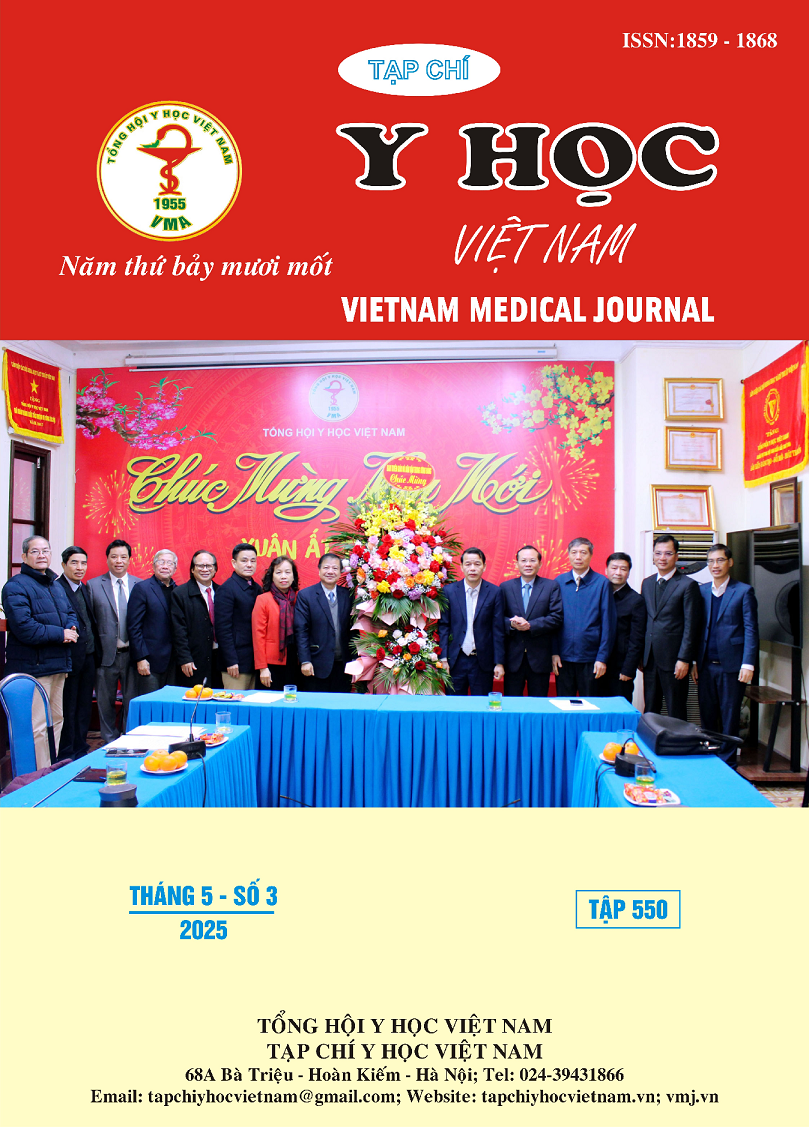THE RESULT OF PAIN REDUCTION AND FUNCTIONAL IMPROVEMENT IN PATIENTS WITH HIGHT LEVEL LUMBAR SPONDYLOLISTHESIS TREATED WITH PERCUTANEOUS SCREWS AND INTERVERTEBRAL FUSION CAGE TRANSFORAMINAL SYSTEM
Main Article Content
Abstract
Over the past decade, the minimally invasive transforaminal lumbar interbody fusion (MIS TLIF) has increasingly been used as a routine replacement for traditional open surgery methods. Lumbar spondylolisthesis is a leading cause of spinal instability and spinal canal stenosis, with two main symptoms: back pain and nerve root compression. Among these, patients with two-level spondylolisthesis are rare but often lead to spinal deformity and significantly impact spinal function. To assess the effectiveness in pain reduction and spinal function limitation after surgery, our study was conducted on 22 patients with two-level spondylolisthesis who underwent minimally invasive surgery between 2019 and 2023. These patients were evaluated and data were collected from medical records before and after surgery, at the time of discharge. Our study shows that 63.6% of the patients were aged 50 and above, with 72.7% being female, which is 2.67 times the number of male patients. The patients from provinces made up double the number of patients from Hanoi, accounting for 63.6%. The average pain score based on the VAS for back pain, leg pain, both before and after surgery, showed a statistically significant correlation with P<0.05. The minimally invasive surgical method proved effective in reducing post-surgical pain, with a greater degree of spondylolisthesis resulting in higher preoperative pain levels. Additionally, the number of surgical levels performed, the extent of the injury, and the degree of slippage were related to higher spinal function limitation scores, with a statistically significant correlation (P<0.05).
Article Details
Keywords
spondylolisthesis, MIS-TLIF, Hanoi Medical University Hospital
References
2. Dorow M, Löbner M, Stein J, et al. Risk Factors for Postoperative Pain Intensity in Patients Undergoing Lumbar Disc Surgery: A Systematic Review. PLoS One. 2017;12(1): e0170303. doi:10.1371/journal.pone.0170303
3. Pruttikul P, Chobchai W, Pluemvitayaporn T, Kunakornsawat S, Piyaskulkaew C, Kittithamvongs P. Comparison of post-operative wound pain between interlaminar and transforaminal endoscopic spine surgery: which is superior? Eur J Orthop Surg Traumatol. 2022;32(5): 909-914. doi:10.1007/s00590-021-03065-2
4. oswestry-2.pdf. Accessed October 13, 2023. https://www.aaos.org/globalassets/quality-and-practice-resources/patient-reported-outcome-measures/spine/oswestry-2.pdf
5. Cui G, Han X, Wei Y, et al. Robot‐Assisted Minimally Invasive Transforaminal Lumbar Interbody Fusion in the Treatment of Lumbar Spondylolisthesis. Orthop Surg. 2021;13(7):1960-1968. doi:10.1111/os.13044
6. Hung SF, Liao JC, Tsai TT, et al. Comparison of outcomes between indirect decompression of oblique lumbar interbody fusion and MIS-TLIF in one single-level lumbar spondylosis. Sci Rep. 2021;11(1): 12783. doi:10.1038/s41598-021-92330-9
7. Vân NT, Mai NTN, Nga NT, et al. Khảo sát sự hài lòng của người bệnh khi sử dụng giảm đau ngoài màng cứng sau phẫu thuật cố định cột sống. Journal of 108 - Clinical Medicine and Phamarcy. Published online November 12, 2022. doi:10.52389/ydls.v17iDB.1442
8. Phương VH, Tuấn NA. So sánh hiệu quả giảm đau sau mổ của phương pháp gây tê cơ dựng sống thắt lưng hai bên so với phương pháp pca morphin ở bệnh nhân phẫu thuật cột sống thắt lưng. TCNCYH 143 (7)-2021: 41-47.
9. Nguyen et al. A cross-sectional study of MIS TLIF in treatment of spondylolisthesis: initial good results from 92 Vietnamese patients. Annals of Medicine & Surgery (2023) 85:2518–2521


